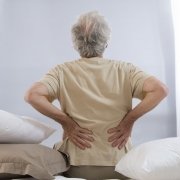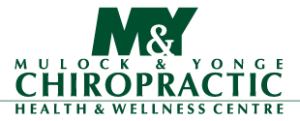It’s that time of year again, kids are back to school, and that means it’s time to discuss backpack safety! They will be loading up with books, cell phones, iPods and whatever else kids find the need to carry in those bags that often appear that if you added one more item the kid carrying it would fall right over.
Backpack Safety: Pack it Light and Wear it Tight
According to the Ontario Chiropractic association, chiropractors are suggesting that students “pack it light and wear it right”. According to the OCA, backpacks that are too heavy or worn incorrectly can be dangerous to a child’s back, neck and shoulders. By the end of the teen years, more than 50% of youth experience at least one low back pain episode. This may be due in part to improper backpack use…
The following few suggestions should help you choose the right backpack for you or your children. And remember… if you see your child lying on their back like a turned-over tortoise, chances are that the pack is just too heavy! And kids, do not forget, using your backpack as a weapon (like hurling it at your little brother) can be hazardous to one’s health.
Step One: Choose Right
Choosing the right size backpack is the first step to safe backpack use!
Tip: Bring a family member or friend to help you measure your backpack properly. Choose a pack that has thick, wide straps – straps that are too narrow can dig into shoulders interfering with circulation and nerves.
Step Two: Pack Right
The maximum weight of the loaded backpack should not exceed 15% of your body weight, so only pack what you need. Also, pack neatly so items are less likely to slide around and create discomfort.
Tip: If the backpack forces the wearer to move forward to carry, it’s overloaded. Choose a backpack with multiple compartments to evenly distribute weight.
Step Three: Lift Right
Face the pack, bend at the knees, use both hands and check the weight of the pack. Lift with the legs. Apply one shoulder strap and then the other.
Tip: Don’t sling the backpack onto one shoulder.
Step Four: Wear Right
Use both shoulder straps – snug, but not too tight.
Tip: When the backpack has a waist strap – use it. The waist strap helps distribute the weight evenly. Slinging the pack over one shoulder can strain muscles.
Frequently Asked Questions
1. My back and neck hurt after wearing my backpack. What should I do?
You should let your parents know about the pain you feel. Pain is a signal from your body telling you something is wrong. You should consult your family chiropractor or other health care practitioner immediately.
2. I have too many books to carry. What should I do?
Lighten your load by removing any unnecessary items. Carry a heavy book or two under your arm.
3. Do I have to wear both shoulder straps and the waist strap?
Yes, because the shoulder straps help you distribute the weight evenly between your shoulders and the waist strap helps to stabilize the load, preventing possible injury during movement.
If you have questions about your child’s backpack safety and/or back pain, you can call our clinic and speak to me.




